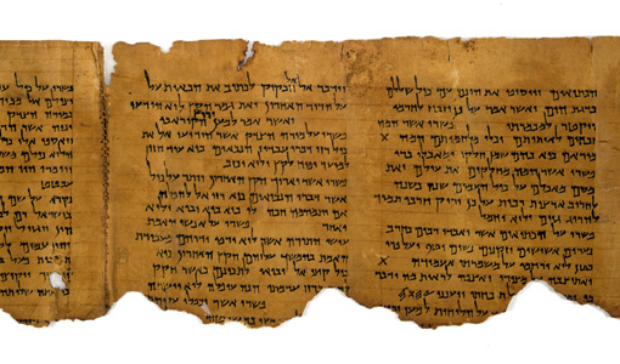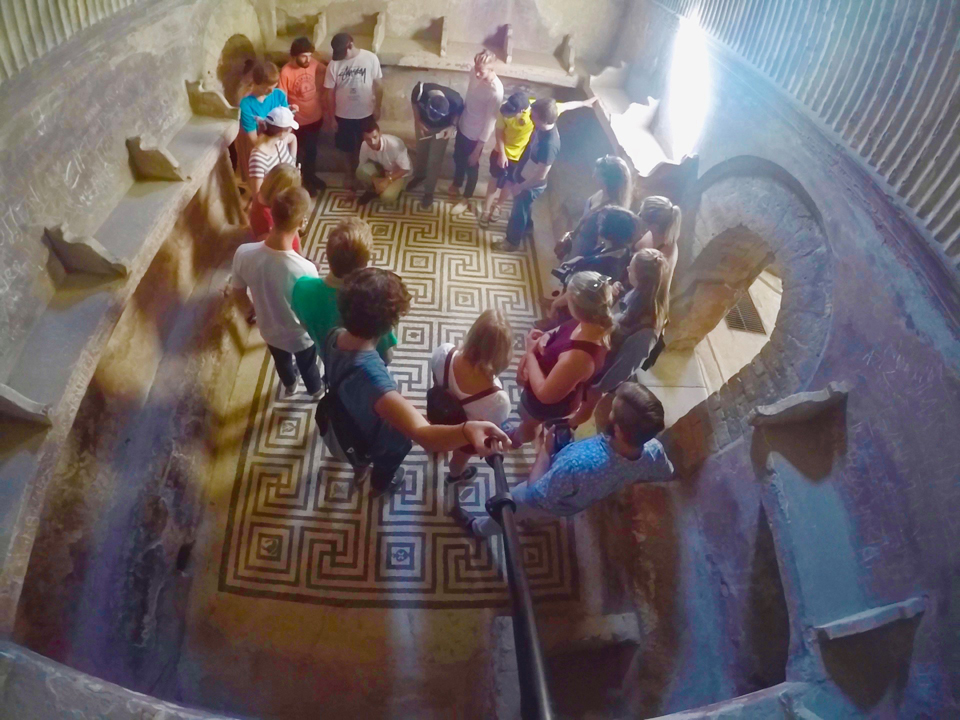What has been called "the greatest archeological discovery of the 20th century" has found its way to the Science Museum of Minnesota in St. Paul. Yet, when one mentions the Dead Sea Scrolls, the images and ideas that pop into many people's minds are often either quite vague or grossly misinformed. Long a staple of ridiculous tabloid stories, the scrolls recently have lent an aura of mystery and intrigue to works of fiction, such as Dan Brown's The Da Vinci Code. Unfortunately, many casual r eaders might not know that its portrayal of the Dead Sea Scrolls is also fiction. When Brown writes that the Vatican suppressed the publication of the scrolls, or that the scrolls contain early Gospels and other specifically Christian texts, he is dealing in pure fantasy. The reality is that the Dead Sea Scrolls are early Jewish texts written or copied from about 250 B.C. to A.D. 50. Among the roughly 800 manuscripts discovered in 11 caves near Qumran beginning in 1947, there are copies of Old Testament books, other widely known ancient Jewish writings, and texts that pertain more specifically to the Jewish community that probably inhabited the site.
The scrolls and the Bible For a biblical scholar like myself, the primary importance of the scrolls is the role they play in helping us understand the process by which the Bible was formed, and in the access they give us to very early biblical manuscripts. The printed Bibles we use today are all based on handwritten copies of texts. As the Bible was copied by hand from generation to generation, discrepancies among manuscripts naturally developed. It is the work of textual criticism to examine these manuscripts and to make a judgment as to which represent the more "original" text. In making this judgment, scholars are very interested in the oldest manuscripts, since they are closest in time to the originals and therefore least subject to scribal errors and emendations.
Until the discovery of the Dead Sea Scrolls, our oldest Hebrew manuscripts for much of the Old Testament (the Masoretic text) dated to the 10th and 11th centuries A.D. The biblical texts among the Dead Sea Scrolls have pushed that date back a full millennium. This was a truly monumental leap. And while the differences between the Masoretic text and the Dead Sea Scrolls are for the most part relatively minor, there were some notable discoveries. For example, the First Book of Samuel (1 Sam 27:10b) contains an entire paragraph that was lost for centuries until the discovery of the scrolls.
Perhaps even more significant than particular textual variants is what the scrolls tell us about the very processes of the formation and transmission of biblical books. A longstanding puzzle with regard to the transmission of the Book of Jeremiah is the fact that the ancient Greek translation of the text is one-eighth shorter than the Masoretic text. For a long time it was assumed that this was the result of the translators' freely editing and abridging the Hebrew text; however, the scrolls brought to light two parallel versions of the Hebrew text of Jeremiah, one resembling the Masoretic form of the text and one the Greek form. It became clear that the Greek translators were using the previously unknown alternate form of the Hebrew text. This also revealed that two distinct versions of the Book of Jeremiah were in circulation around the time of Christ – more than 500 years after the time of Jeremiah himself. The scrolls confirmed that the formation and transmission of biblical texts is often a long and fluid process.
The scrolls and early Judaism and Christianity While the Dead Sea Scrolls are not Christian works, they are significant to Christians as well as Jews for understanding a very formative period for both religions. They provide a window onto the Second Temple and New Testament worlds. Most scholars believe the scrolls were written by the Essenes who lived near the Dead Sea. Those texts that pertain specifically to this community tell us much about this group and some of their points of difference with other Jewish groups, such as the Pharisees and Sadducees. We see how ancient biblical prophecies were interpreted as bearing on present-day historical realities in a collection of commentaries known as Pesharim. We see how messianic expectation may have varied among Jewish groups as one of the scrolls, the Manual of Discipline, speaks of a Messiah of Israel (a royal, political figure) and a Messiah of Aaron (a priestly figure).
One celebrated legal text known as the Halakhic Letter (or 4QMMT) even sheds new light on St. Paul's letters in the New Testament. Its distinctive usage of the phrase "works of the law" gives us a clearer picture of what Paul may have had in mind when he uses the same phrase (in Greek) in his letters to the Romans and Galatians. The contrast Paul makes between "works of the law" and "faith in Christ" sometimes has been a theological sticking point among Christians. The new insight we now have into the world behind the former phrase has opened up new avenues in Christian theology and ecumenism.
Read more from CAS Spotlight





